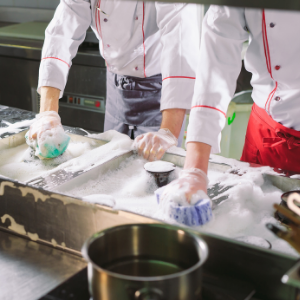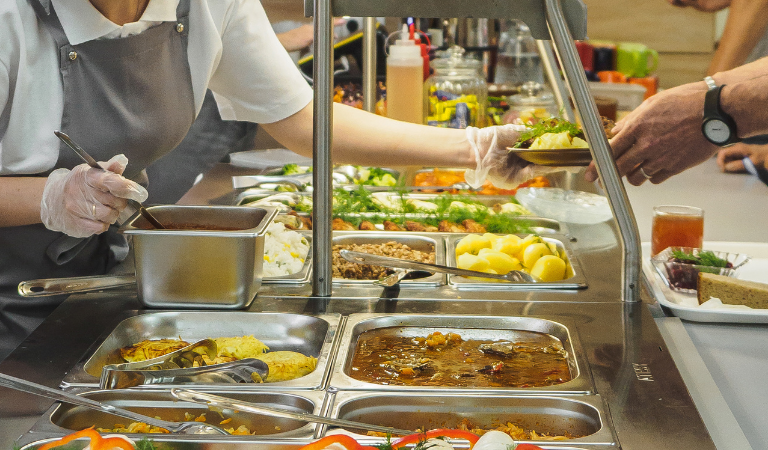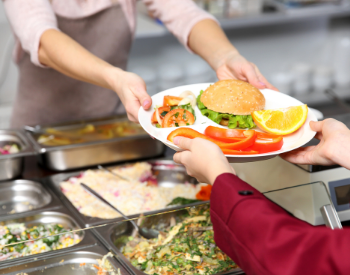Buffet restaurants have suffered in recent years but with the pandemic, the decline has accelerated rapidly. Since buffets have many high-contact surfaces, it’s easier for germs and viruses to get passed from one person to another. This is why the US Food and Drug Administration called for buffets and salad bars to discontinue service in March of 2020. With these combined factors piling up, buffets have been forced to up their game in terms of safety and switch to cafeteria-style business models to survive the pandemic.
Buffets Are Cleaning Up Their Act
In order to reduce high-contact surfaces, buffets are now eliminating the use of communal serving utensils, cutlery, and dishes. They are also keeping tables 6-feet apart from each other to help prevent patrons from crowding around a single area. To comply with COVID-19 regulations, operators have implemented procedures such as:
- Cleaning every touchpoint
- Checking temperatures of employees and customers
- Setting up hand sanitizer stations
- Using masks and gloves
- Roping lines for queuing
- Placing tables further away from each other
- Delivering drinks to tables
It has always been important for buffets to have strict sanitation practices because of the general perception the public has of them. Fortunately, there is a widespread belief that many of these sanitation practices will become a permanent part of the buffet experience due to the increased hygiene awareness customers will have after the pandemic.
How Are Buffets Adapting During The Pandemic?
Throughout the country, many buffet restaurants have shut down due to their inability to adapt to the pandemic. On the other hand, restaurants that have managed to survive, have done so by changing their business model. Some buffets have converted into a traditional, sit-down restaurant but this has proven to be expensive due to the need to hire more servers. This is why the model that’s been most successful for buffets is the cafeteria-style dining.

What Is A Cafeteria-Style Buffet?
Very similar to the cafeteria you are familiar with from school, a cafeteria-style buffet involves customers lining up and picking their food from a large spread. However, instead of serving themselves, customers are served by staff.
In this style of dining, dishes have already been premade or there is a menu of individual meals patrons can choose from. Like the buffet-style, customers can still expect to have a large amount of food on their plate. By switching to a cafeteria-style buffet, operators have found the need to rewrite their menu, train staff to serve customers, and try to partner with delivery services to reach more customers. Establishments also have more space to put tables since they are no longer using the area where the self-serving stations would typically be. Thanks to the cafeteria-style dining, buffet operators can keep their doors open and stay in business.
What About Alternative Business Models?
Other business models, such as sit-down dining have proven to be detrimental to buffets due to the need to have more staff. While more staff is a necessity, buffets don’t have enough resources to hire more employees at this time.
The takeout-and-delivery-only model has also not worked for buffets. This model requires buffets to cut down on staff (something that operators want to avoid), purchase more food packaging equipment, and close a large part of their establishment. Buffet restaurants tend to be larger than your average restaurant because they need a lot of space for self-serving stations. Because of this, they have a high rent which is compensated by having more space for customers. By not using this area in a place of a takeout-and-delivery-only model, these restaurants waste a lot of their profit on space they are no longer using.
Will Buffets Survive The Pandemic?
Buffets were already having a tough time before the pandemic and are struggling to survive during the pandemic. This experience has left operators questioning whether to permanently adopt these COVID-19 restrictions because it’s a way of showing their customers how clean their establishment can be. However, adopting these restrictions and regulations has proven costly. By changing to a cafeteria-style restaurant model, buffets lose their convenience of self-service and use of minimal front-of-house labor. On the bright side, the switch to the more sanitary cafeteria-style service makes customers feel safer and increases the chances of their return. Because of this, it is quite possible that buffets will permanently become cafeterias, and buffet restaurants will cease to exist.








